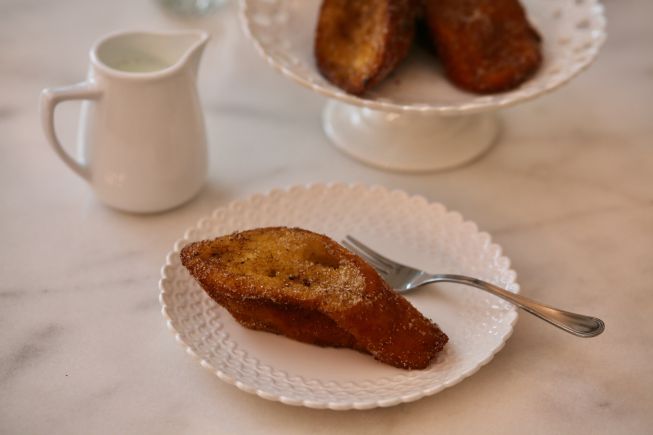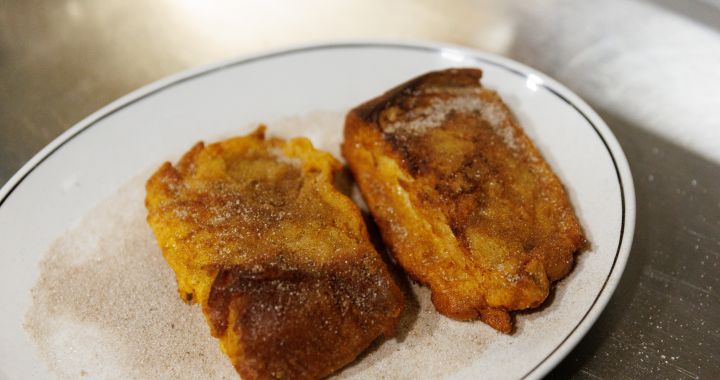if there is one typical dessert of Spanish Holy Week, these are the torrijas. In close competition with the traditional monas, this bread bathed in milk and then fried is, without a doubt, the most anticipated sweet spot of the lunches and dinners that many Spaniards and visitors to our country share every year during this holiday.
And is it, who can resist the juiciness and sweetness without being sickened by this dessert? We don’t! That’s why we wanted to save the most traditional French toast recipe to invite you, as we will do from LOS40, to prepare your own dessert at home. Pay attention to the ingredients and the preparation steps!
Ingredients for making classic French toast
- 2 eggs
- 1 liter of milk
- 1 loaf of hard bread
- Stick and ground cinnamon
- Mild olive or sunflower oil
- the zest of half a lemon
- Sugar. We recommend using around 75 grams, but if you like it sweeter you can increase it a bit.
Preparing french toast, step by step
Recipe for Torrijas, the typical Easter candy. / Cesaro De Luca/Europe Press via Getty Images
- In a casserole or saucepan, heat the milk and put the lemon to infuse with the cinnamon sticks and two tablespoons of sugar. With this step we will have a flavored milk that will give a particular flavor to the candy.
- The flavored milk is allowed to stand until the temperature drops and you have hot milk.
- We cut the bread with a thickness of about 2 centimeters.
- Beat the two eggs well in a bowl.
- In a fountain where we have hot milk, we put the slices of bread so that they are well soaked in the milk and absorbed.
- Remove the torrijas from the source, drain them and pass them in the beaten egg.
- Put them in the pan with hot oil to brown them.
- Mix the sugar with the cinnamon powder and leave the mixture ready.
- Remove the French toast from the pan and toss them in the cinnamon and sugar mixture.
- Allow to cool slightly then serve or store in the fridge.
Torrijas, a Spanish dessert of European origin
Although many of us in Spain believe that French toast is part of our gastronomic heritage, the reality is that we are not the only ones who feel attached to this dessert.
The origin of French toast is somewhat difficult to determine, but what is known is that it has been eaten, over the centuries, in different parts of Europe. Considered part of the heritage of the Roman peoplethe first known description of this candy dates from the Middle Ageswhen they have been cooked expressly for help women in labor to face the difficult moment of bringing a life into the world.
Regarding its connection with Holy Week, although it is not yet 100% clear, it could be linked to the great calorie intake that French toast brings to those who eat it. Well, it is believed that since it is a high calorie and satiating food made from cheap ingredients, Christians began to include it in their Lenten meals to compensate for the periods of fasting they were doing during these days.
A candy loved all over the world

Torrijas, the typical Easter candy. / Cesaro De Luca/Europe Press via Getty Images
Today, French toast is eaten in much of the world. In Portugal is one of the most traditional Christmas sweets and they call them rabanadas; in Germany they are served as Arme Ritter; in France you can ask for them in a restaurant saying you want French toast; In the UK they are known as poor knights of Windsor, in Austria by profesen, in Hungary gottelteeijfe and in the US they were christened simply frech toast, meaning French toast.

